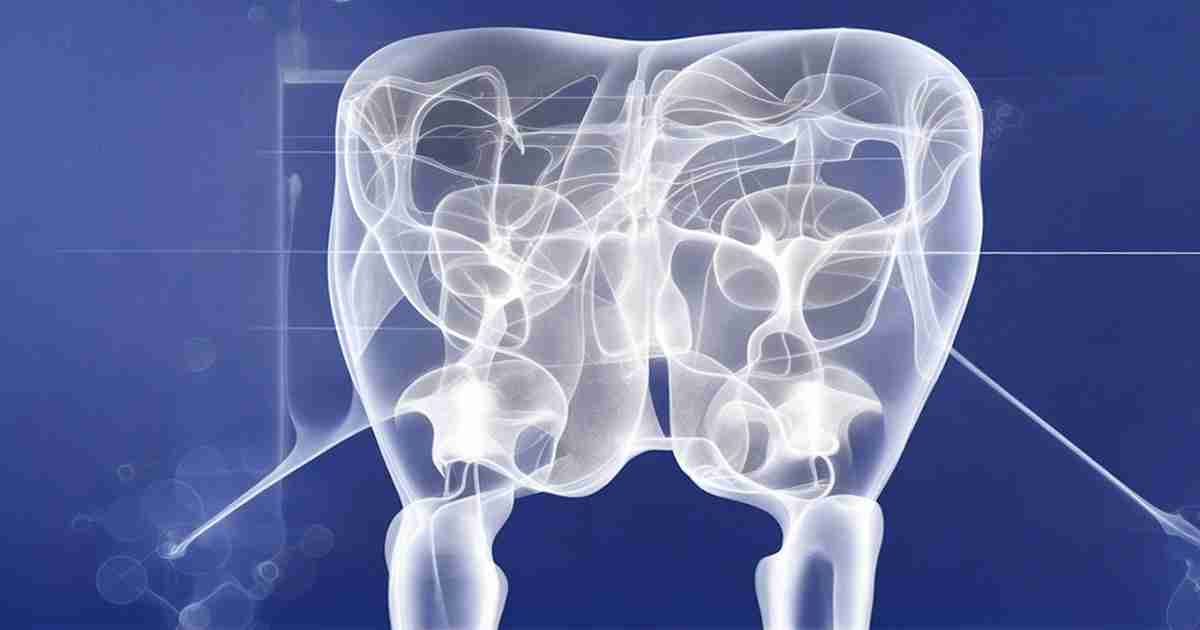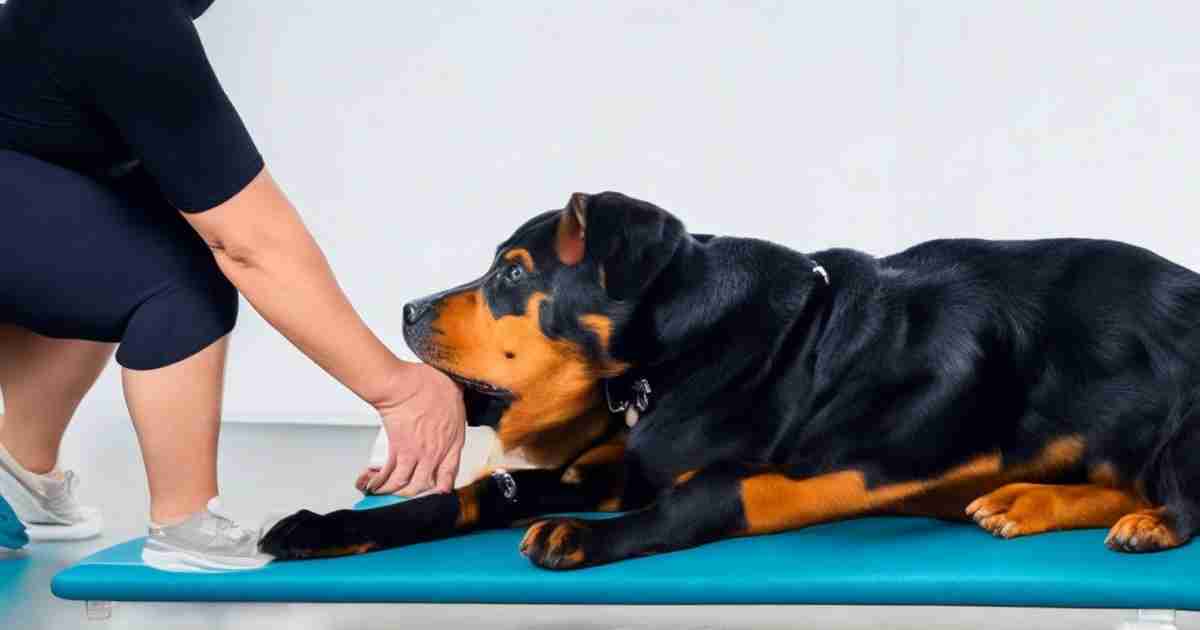Let’s talk hips, friends! If you’re a Rottie owner or want to be, it’s crucial to understand hip dysplasia. This common joint disorder can really limit your pup’s activity if it develops.
The good news? There are early signs of hip dysplasia in Rottweilers that you can watch for. Catching it early makes a huge difference in managing pain and arthritis later on. Consider this your handy hip-health guidebook!
We’ll cover:
- What hip dysplasia is and why it impacts Rotties
- The main risk factors to be aware of
- Recognizing subtle early symptoms
- Diagnostic tests your vet may perform
- Treatment options for mild to moderate dysplasia
- Managing more severe cases of this joint disease
- Preventing hip issues through proper nutrition and exercise
- And so much more!
Let’s dig into these hip tips so you can keep your Rottie pup’s rear in gear!
Dem Bones: Understanding Hip Dysplasia In Rottweilers
Hip dysplasia sounds like some weird dinosaur disease, right? But it’s really just a common developmental orthopedic problem. With hip dysplasia, the ball and socket joint don’t fit together snugly.
This poor fit leads to abnormal wear and tear, joint instability, inflammation, and eventual arthritis. No fun!
In milder instances, the symptoms might also come and cross. However superior hip dysplasia can seriously affect mobility and fine of life if left unaddressed.
The American College of Veterinary Surgeons estimates that hip dysplasia influences kind of 20% of all puppies. Certain larger, athletic breeds are especially prone, including:
- Golden Retrievers
- German Shepherds
- Saint Bernards
- Mastiffs
- And our favorite hardworking companion, the Rottweiler
So why are big, active dogs like Rotties so susceptible to hip issues? There are a few key reasons:
Genetics – Hip dysplasia is polygenic, meaning many genes influence its development. Responsible Rottie breeders screen parent dogs for hip health. But some hip problems still slip through.
Growth Rate – Rotties grow rapidly as puppies. Too-fast bone growth can lead to joint abnormalities.
Nutrition – Excess weight stresses joints. An improper calcium/phosphorus ratio in puppy diets also causes problems.
Exercise – Too much high-impact activity before joints fully mature puts extra wear and tear on hips.
Injury or Trauma – Any damage to the joints or ligaments around the hips raises the risk of dysplasia. Once a joint destabilizes, it cascades into further issues.
So in summary: genetic predisposition, rapid growth, extra weight, overexertion, and injury can all contribute to hip dysplasia in Rottweilers. But understanding those risk factors is half the battle!
The Early Warning Signs Your Rottie’s Hips Need Help
Catching hip dysplasia early is CRUCIAL. Mild cases can often be managed with medication, supplements, physical therapy, or other nonsurgical treatments.
Severe dysplasia may require surgery like total hip replacement to stop pain and arthritis. The cost of this runs $5,000-$6,000 per hip!
That’s why identifying symptoms early is so important. Here are subtle signs of hip trouble in young Rotties under age 2:
Bunny Hopping – Your pup runs with its back legs together, hopping like a rabbit. It’s an attempt to stabilize weak hips.
Swaying or Loose Gait – There’s too much side-to-side hip motion. Your dog may look like they’re swaggering or waddling.
Difficulty Standing Up – After lying down for a while, your Rottie seems stiff getting to their feet. Their back legs just don’t want to push up.
Reluctance to Run, Jump, or Climb – Your once-active pup turns couch potato, avoiding stairs or play. It hurts their hips!
Sensitivity to Touch – Your dog reacts negatively if you apply light pressure on their hips, rear legs, or lower back. Pain response!
Licking or Biting at Hindquarters – Your Rottie spends lots of time grooming their back legs. They’re drawing attention to discomfort.
Popping Sounds – You hear clicking or popping from the hip joints when your dog walks or gets up. It’s from the ball sliding unevenly.
Lameness in Back Legs – Your dog is limping, dragging their feet, or just generally struggling to bear full weight on their rear.
If you notice any of these red flags, make an appointment with your veterinarian right away. Catching symptoms when your Rottie is young keeps treatment options open. Your vet will likely…
How Vets Diagnose Hip Dysplasia in Rottweilers
If hip dysplasia is suspected based on symptoms, your veterinarian will recommend diagnostic imaging to assess the true extent of the problem. Here are some common hip-health tests:
Radiographs (X-rays) – Different positioning like hips extended or compressed helps determine looseness and arthritis. Rotties should be x-rayed under sedation for the best images.
PennHIP – Very accurate hip laxity measurements are taken based on specialized X-rays. Results give quantifiable hip scores.
CT Scan – Cross-sectional CT imaging allows a 3D view of the exact bone and joint structure. Helpful for surgical planning.
MRI – This (expensive) test is the gold standard for observing soft tissue around the joint, like cartilage, tendons, and ligaments.
Based on test results, your vet will advise the best treatment plan for your Rottie’s specific degree of hip dysplasia. Let’s look at how mild, moderate, and severe cases are managed.
Treating Mild Hip Dysplasia in Growing Puppies
For young Rotties just starting to show symptoms, mild hip dysplasia can often be managed without surgery. Here are some typical treatment options vets recommend:
Joint Supplements – Chondroitin, glucosamine, turmeric, and fish oil support joint health and decrease inflammation. They work best when started early.
Weight Management – Reducing strain on the hips prevents faster deterioration. Keep puppy growth steady and lean.
Activity Restriction – Limit exercise to shorter leash walks. No running or jumping that stresses the hips. Restrict the use of stairs too.
Anti-Inflammatory Medication – Drugs like carprofen provide pain relief and help slow arthritis.
Physical Therapy – Exercises to strengthen hind legs and core muscles and bolster stability around the hip joint. Stretches also improve mobility.
The goal of nonsurgical treatment is to allow the hips time to develop more stability on their own while minimizing pain and arthritis. About 25% of young dogs have their mild hip dysplasia resolved or greatly improved by maturity with conservative measures alone.
For Rotties who don’t respond sufficiently, surgery becomes the next step.
Surgical Options for Moderate to Severe Cases
Once your Rottie is fully grown, surgical procedures can help hips with more advanced dysplasia, arthritis, and instability. Common surgery choices include:
Juvenile Pubic Symphysiodesis – This leg-lengthening surgery done before puberty limits how much the pelvis expands outward, improving hip fit and function long-term.
Triple Pelvic Osteotomy – The socket portion of the hip joint is rotated to provide better coverage of the femoral head. Performed on young dogs under 10 months old.
Femoral Head Ostectomy – Part of the bone is removed to allow the femoral head to slip into the socket more deeply, creating a false joint with improved mobility.
Total Hip Replacement – The entire hip joint is replaced with an artificial implant for severe dysplasia. Expect 6-8 weeks of limited activity for proper implant integration.
Your orthopedic surgeon will advise which hip surgery gives your Rottie the best outcome based on age, exact hip anatomy, fitness level, and other factors.
Rapid advances in canine hip replacement technology are allowing vets to return dogs successfully to normal function, even vigorous activity. But prevention is still ideal! Let’s look at proactive steps.
Preventing Hip Dysplasia in Rottweiler Puppies
The most important thing you can do for your Rottie puppy is manage their development carefully in those crucial first 8-12 months. Follow these tips:
Choose health-tested parents – Work with responsible show or hobby breeders whose dogs are OFA or PennHIP certified/tested for hip dysplasia. Review scores.
Avoid overweight – Follow your vet’s recommended slow-growth guidelines. Excess weight stresses soft puppy joints.
Try joint supplements – Adding chondroitin, glucosamine, and omega oils to meals helps nurture healthy cartilage and joints.
Limit exercise – Take it easy on leash walks. No jumping, running on hard surfaces, or overplaying with other pups. Gentle, free play in a grassy yard is best.
Enroll in training – Controlled gait, balance, and coordination exercises strengthen muscles supporting hip alignment. Avoid repetitive motions like weaving through cones.
Use ramps – Save those puppy joints by providing easy access up onto furniture or into vehicles using gently sloped ramps.
If you start your Rottie off on the right paw, you’re giving their hips the best chance to develop normally and avoid dysplasia. But genetics can still sneak hip issues in. That’s why knowing the subtle early red flags is so important!
Final Tips on Catching Hip Troubles Early
Hopefully, this overview gives you confidence in identifying early hip dysplasia warning signs in your Rottie puppy. To recap, watch for:
- Bunny hopping instead of a smooth running gait
- Stiffness or trouble standing up after lying down
- Limping or lameness in their back legs
- Discomfort when you touch or manipulate hips
- Reluctance to climb or jump suddenly
If you spot anything concerning, get your vet’s opinion right away. The younger your dog is, the better their prognosis with early treatment. Catching hip dysplasia at 6 months old vs. 18 months makes a huge difference in outcome!
Here’s to many healthy, active years with your happy Rottie! Just be sure to show those hip joints some love in return.










1 thought on “The Early Warning Signs of Hip Dysplasia in Rottweilers”